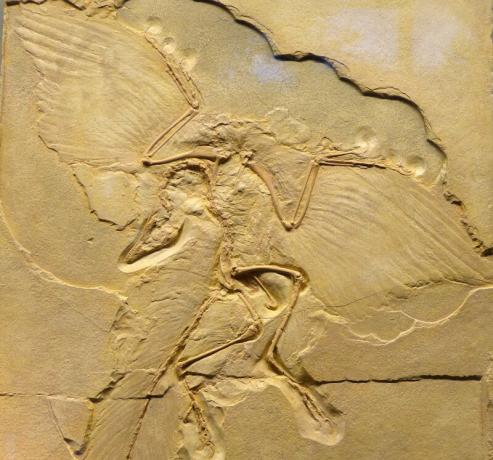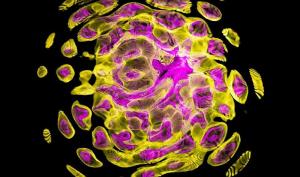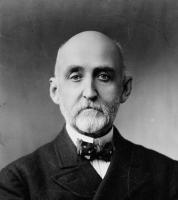Are birds dinosaurs? The keys to their classification as animals
When asked by any paleontologist closely associated with the field of phylogeny, they may not hesitate to say that birds are dinosaurs. Entering into a more confusing debate, surely also will clarify that birds are "avian dinosaurs" and, in turn, reptiles.
Despite getting lost in semantic nuances and over-complicating things with this type of subject, terminological and phylogenetic reflections in the world of evolution are necessary: Rome was not built in a day, and human knowledge requires an exhaustive analysis and the testing of theories and multiple points of view to cement its bases.
For this reason, in this space we are going to focus on the "scientific consensus" based on the matter that concerns us today, but we must be clear that none of the above is an ironclad, immovable dogma. For example, some specialists continue to argue that birds evolved from crocodilian morphs, a theory that is difficult to justify, but it does exist.
It is because of this disparity of opinion that nothing is entirely real or absolutely false. We move in a highly speculative field, which in my personal opinion, is quite stimulating. In the world of science, black and white colors are out of favor: the answer is usually found in a gray scale. Good,
Are birds dinosaurs or not? Do not despair, because here we present the possible answers.- Related article: "The theory of biological evolution"
Are birds dinosaurs? A phylogenetic conglomerate
Phylogeny is a term that refers to a scientific discipline in charge of studying kinship relationships between species or taxa in general. To reconstruct the evolutionary history of a taxonomic group, it is not enough to look at the external characteristics of the animal and place the families as far or as close as we want from the ancestor: strict genetic analyzes must be followed and criteria applied mathematicians.
Certain computer programs based on the application of algorithms build phylogenetic trees with the genetic evidence provided from the different organisms. It is important to note that this reconstruction is based on the famous Ockham's razor or principle of parsimony. This is, the most probable answer lies in the tree that is built from the least number of possible changes.
For example, when faced with a winged animal analyzed today, two different assumptions could be made:
- That it presents wings in its ancestral condition, loses them at some point in its evolutionary history and the current descendants recover them again.
- That it did not present wings in its ancestral condition and then they appeared derived from structures of its primitive ancestor.
We accept ourselves under the assumption that evolution happens in the simplest way, and therefore, unless reliable paleontological evidence is provided, the second option at first glance will always seem more viable.
The complex phylogeny of birds
In addressing the evolutionary history of birds, we need to begin by setting the record straight: the current scientific consensus is that their Evolutionary divergence likely began in the Triassic period from a unique clade of theropod dinosaurs, the coelurosaurs. But what do today's birds share with these primitive beings?
1. The feather debate
At this point it is essential to introduce perhaps the most key piece of this puzzle: the fossil of Archeopteryx found in 1861. This evolutionary imprint shows us a clearly transitional individual between a dinosaur and a modern bird: the relationship is undeniable.

Since this point, feathers have been discovered in many other dinosaur taxa. Until relatively recently, this morphological trait had only been associated with theropods (as we have already said, those considered ancestors of modern birds), but a series of fossils dating back 160 million years found in Siberia suggest something different, as evidence of ornithischian dinosaurs has been found feathered.
According to scientists interviewed by the National Geographic source, "this probably means that the common ancestor of all dinosaurs had feathers." Following the principle of parsimony previously exposed, it is more coherent to think that the ancestral group had feathers. and that some members lose them, that the record of a history without feathers-with feathers-without feathers again (two evolutionary steps with respect to three).
Even so, there is no shortage of detractors who oppose this idea. A small scientific minority argues that the presence of certain "protofeathers" in fossilized imprints would correspond to the degradation of collagen fibers, and that species that unquestionably possess feathers, such as oviraptorosaurs and dromaeosaurs, are not dinosaurs, but true birds unrelated to they. This argument is considerably dismantled when some studies have shown the presence of melanin of support color in these structures, something that is expected of a plume but not of a formation of collagen.
- You may be interested in: "What is epigenetics? Keys to understand it
2. Skeleton
The relationships between the skeletal structures of birds and dinosaurs is reliable, and it is of an essential reality to take into account when establishing relationships between birds and dinosaurs. More than 100 avian anatomical aspects have been detected in theropod fossils, among which are similarities in these structures:
- Neck.
- Low density hollow bones.
- Pubis relocated, from an anterior position to a more posterior one.
- Five or more vertebrae incorporated into the sacrum.
- Flexible wrists with semilunar carpus.
- Elongated upper extremities.
- Scapula.
- Presence of furcula.
The number of general similarities reaches more than 20. Even so, the presence of a furcula, the result of fusing the two clavicles, is especially striking, since it is only present in birds and theropod dinosaurs. As has been shown to date, this ribcage-strengthening structure appeared before flight. Along with the presence of feathers, the furcula is one of the characteristics that has most allowed direct correlation between birds and theropods.
- You may be interested in: "Phylogeny and ontogeny: what are they and how do they differ"
3. lack of DNA
We can go on naming similarities between theropods and birds endlessly: egg laying, lung air sacs, four-chambered hearts, the use of gastroliths (structures that facilitate digestion in the stomach of the animal...etc). Still, an essential clarification is necessary. So far, no reliable record of DNA extraction from fossil samples has been obtained..
This enormously complicates the task of reconstructing phylogenetic trees, since any geneticist will affirm that the genetic tests should always be the first of the bases when reconstructing the evolutionary history of any being alive. Even so, there is other reliable evidence that is not based only on external skeletal and morphological characters.
For example, traces of tissue have been obtained inside the bones of the tyrannosaurus rex, and after its rehydration and analysis, seven different types of collagen were discovered. When compared to those of various birds (especially the chicken), their morphological similarity provided further evidence of the correlation between theropods and modern birds.
Even so, despite all these morphological and structural similarities, we still lack the definitive key: a concordant DNA that silences all voices against the facts presented here. Despite this, something is clear from the scientific community, and that is that There is no more accepted theory of the origin of birds today that is not linked to theropods.
Summary
We can answer yes, that birds are dinosaurs and leave behind all the nuances exposed so far. This statement fails to oversimplify things, but the supposed "debate" between the relationship between theropods and birds is something that is already considered settled in the scientific community. Despite the fact that there are detractors of this idea, the very propositions made by them violate dogmas so widely accepted in the world of phylogeny today, such as the principle of parsimony.
Birds are most likely direct descendants of coelurosaur theropods, since there is no other theory that explains its appearance with a smaller number of evolutionary steps. Simple as that.
Thus, the current consensus is that birds are a group of maniraptor theropod dinosaurs that originated during the Mesozoic.
Bibliographic references:
- Are birds really dinosaurs? Berkeley University. Collected on September 9 in https://ucmp.berkeley.edu/diapsids/avians.html#:~:text=Ask%20your%20average%20paleontologist%20who, birds%20are%20technically%20considered%20reptiles.
- Feduccia, A. (2002). Birds are dinosaurs: simple answer to a complex problem. TheAuk, 119(4), 1187-1201.
- Feduccia, A. (2012). Riddle of the Feathered Dragons: Hidden Birds of China.
- Rezende, E. L., Bacigalupe, L. D., Nespolo, R. F., & Bozinovic, F. (2020). Shrinking dinosaurs and the evolution of endothermy in birds. Science advances, 6(1), eaaw4486.
- Schweitzer, M.H., Wittmeyer, J.L. and Horner, J.R. (2005). Soft-Tissue Vessels and Cellular Preservation in Tyrannosaurus rex. Science 307:1952–1955
- Wellnhofer, P. (1988). "Ein neuer Exemplar von Archeopteryx". Archeopteryx. 6: 1–30.
- Xu, X; Norell, MA; Kuang, X; Wang, X; Zhao, Q; Jia, C (October 2004). "Basal tyrannosauroids from China and evidence for protofeathers in tyrannosauroids". Nature 431 (7009): 680-4.


